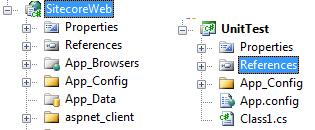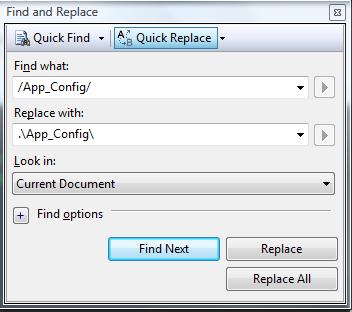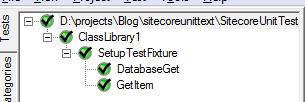
This post has been migrated from www.experimentsincode.com, we apologise if some of the images or content is missing
Posts in this series:- Unit Testing Sitecore in the NUnit GUI – Part 1 – Setting Up
- Unit Testing Sitecore in the NUnit GUI – Part 2 – Writing Tests
- Unit Testing Sitecore in the NUnit GUI - Part 3 - Known Problems
- Add the following references to the Class Library:
- log4net.dll
- Lucene.Net.dll
- NUnit.Framework.dll
- Sitecore.Kernal.dll
- Sitecore.Logging.dll
- Sitecore.Nexus.dll
- System.Configuration.dll
- Add an App.config to the Class Library
- Open the Sitecore Web.config and copy the following section headers to the App.Config
<configSections> <section name="sitecore" type="Sitecore.Configuration.ConfigReader, Sitecore.Kernel" /> <section name="log4net" type="log4net.Config.Log4NetConfigurationSectionHandler, Sitecore.Logging" /> </configSections> - Copy the following configuration sections from the Web.config into the App.config:
- connectionStrings
- appSettings
- sitecore
- log4net
- Copy the App_Config directory from the website to the Class Library

- This is a bit of a longer step, for every file beneath the App_Config directory you need to change the "Copy to Output Directory" property to "Copy always".
- Next we need to update the App.config so that all references to files in the App_Config directory use a windows path rather than a URL. Open the App.Config and then using the Find and Replace tool, configured as show below. Note that we have changes the forward slashes to backslashes and that we have added a full stop to the start.
 Click "Replace All"
Click "Replace All" - Configure the class library to run NUnit once it has been built.
[TestFixture]
public class SetupTestFixture
{
[Test]
public void DatabaseGet()
{
Database database = global::Sitecore.Configuration.Factory.GetDatabase("master");
Assert.IsNotNull(database);
}
[Test]
public void GetItem()
{
Database database = global::Sitecore.Configuration.Factory.GetDatabase("master");
Assert.IsNotNull(database);
Item item = database.GetItem("/sitecore/content");
Assert.IsNotNull(item);
Assert.AreEqual("content", item.Name);
}
}
I built and run the Class Library and launched NUnit, when the tests run the both pass:
 For me this method has the following advantages:
For me this method has the following advantages:
- All my tests are within one testing application (NUnit Gui)
- As long as my build server can see my test database these test can be run as part of the build
- I can perform code coverage stats on these tests
- It will force a clear separation of presentation logic/business logic within my code (more  in a future post)
- Does not need to be run from within a web site
- Quick to setup
- Nice way to test business logic
- Can't use Sitecore.Context (I would argue that if you require this for a test then your code is written incorrectly)
- Can't test XSLT's, ASCX output
- If you want to use it on the build server then the build server has to be able to see the database
- No access to some of the pipelines (however you might be able to fire these manually)
- No HttpContext (again, if you need this to test you code then you code is probably incorrectly written
- Two sets of configuration files

